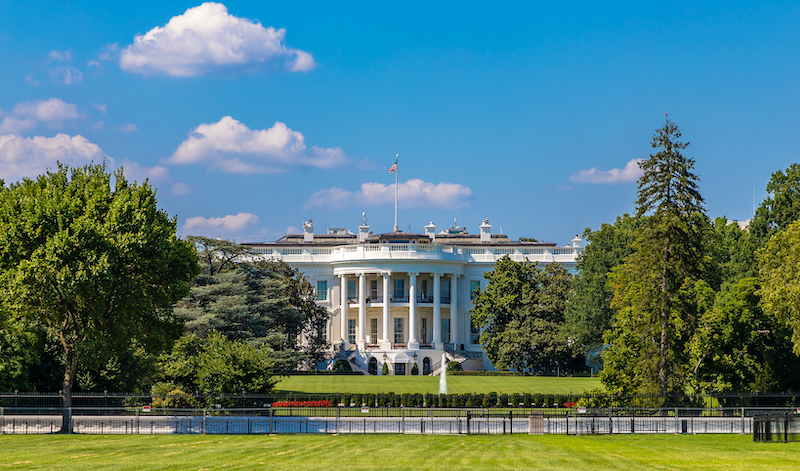
Scholars argue that attacks on the constitutionality of federal climate change regulations distort the major questions doctrine.
Shortly after his inauguration, President Biden promised to reduce climate pollution in every sector of the economy. One obstacle to achieving this goal: the Trump Administration.
Although President Trump is no longer in office, the way the Trump Administration approached Obama-era regulations may have developed a blueprint for states and industry groups to challenge climate regulations adopted by the Biden Administration, warn Richard L. Revesz of NYU School of Law and Natasha Brunstein, a student at Yale Law School. Revesz and Brunstein argue that the Trump Administration manipulated what lawyers and judges have come to refer to as a “major questions” doctrine to justify striking down any regulation it disfavored.
Originating in a 1994 opinion of the U.S. Supreme Court, the major questions doctrine holds that courts should not defer to agencies’ statutory interpretations that implicate questions of major “economic and political significance.” In its 2000 opinion in FDA v. Brown & Williamson Tobacco Corp., for example, the Supreme Court stated that “given the economic and political significance of the tobacco industry” it was “extremely unlikely” that Congress intended to give the FDA the authority to ban tobacco products.
Revesz and Brunstein contend that the Trump Administration distorted this doctrine beyond its intended use. Historically, courts have used the major questions doctrine only in “extraordinary circumstances” to strike down rules that would directly burden millions of Americans. According to Revesz and Brunstein, the Trump Administration used metrics that are unsupported by the Supreme Court’s jurisprudence to argue that several Obama-era regulations presented questions of major economic and political significance and should be invalidated.
One such regulation—the Clean Power Plan—received the Trump Administration’s most sustained attacks. Arguing that the plan was unconstitutional, the Trump Administration replaced it with the Affordable Clean Energy Rule. To defend its repeal of the Clean Power Plan, the Trump Administration manipulated the major questions doctrine, explain Revesz and Brunstein.
In particular, the Trump Administration claimed that the major questions doctrine should apply against regulations with high costs. In a brief to the U.S. Court of Appeals for the D.C. Circuit, for example, the Trump Administration argued that the major questions doctrine should apply to the Clean Power Plan because regulators projected it would “have billions of dollars of impact.”
But as Revesz and Brunstein explain, environmental regulations frequently impose significant costs without raising major questions concerns. Confronted with this reality, the Trump Administration distinguished the Clean Power Plan from other environmental regulations by arguing that major questions are more likely to arise when an agency intends to impose costs on regulatory entities, as opposed to regulations that impose costs incidentally. Again, Revesz and Brunstein dispute this construction of the major questions doctrine. They maintain that the Supreme Court has never applied the doctrine to consider agencies’ intent.
The Trump Administration also claimed that large numbers of public comments proved that the Clean Power Plan presented major questions. Revesz and Brunstein, however, identify several cases in which courts declined to apply the major questions doctrine despite regulators receiving high volumes of public comments. In addition, Revesz and Brunstein highlight that the Trump Administration defended regulations, such as the Federal Communication Commission’s net neutrality rule, that received more comments than the Clean Power Plan.
This inconsistency belies a deeper problem with using comments as a metric for invoking the major questions doctrine: It encourages opponents of regulations to submit as many comments as possible. Revesz and Brunstein document the numerous ways in which organizations could exploit the comment process, including using computer programs to generate fake email addresses and submitting comments under false names. These potential abuses would create the illusion that a regulation raises issues of major political and economic significance.
In addition to trying to rely on the number of comments on the Clean Power Plan, the Trump Administration also argued that “public interest” in the Clean Power Plan indicated that it violated the major questions doctrine. Pointing to “intense” litigation involving local authorities and many members of Congress, the Administration reasoned that the validity of the Clean Power Plan had to be a major question.
The Supreme Court has never rested the major questions doctrine on the level of public interest in a regulation, assert Revesz and Brunstein. Lower courts, however, have started to follow the Trump Administration’s view and rely on public interest to invoke the major questions doctrine. Revesz and Brunstein warn that incorporating this factor into the major questions doctrine could enable sophisticated groups to defeat regulations by funding opposition campaigns.
If these arguments find support in future litigation, they could prevent future administrations from regulating climate pollution, caution Revesz and Brunstein.
Their observation appears at least somewhat prescient. In a recent Supreme Court dispute over the Clean Power Plan, the petitioners invoked the major questions doctrine to argue that the Clean Air Act does not authorize federal agencies to regulate greenhouse gas emissions. Echoing the Trump Administration’s vision of the major questions doctrine, the petitioners described the “colossal” regulatory costs at stake and urged the Court to consider public salience in its use of the major questions doctrine.
The Supreme Court sided with the petitioners, applying the major questions doctrine to hold that EPA had exceeded its authority under the Clean Air Act. But the Court did not rest its decision on the Clean Power Plan’s regulatory costs or public salience. Instead, the Court focused on how EPA’s new interpretation of the Clean Air Act differed from its historical practices. According to the Court, this deviation suggested that EPA effected a “fundamental revision” of the Clean Air Act and violated the major questions doctrine.
Although courts have not fully embraced the Trump Administration’s interpretation of the major questions doctrine, time will tell whether the doctrine grows to include these additional metrics. If so, the doctrine could enable a potentially crippling attack on President Biden’s climate goals.



